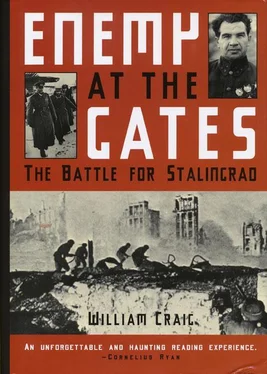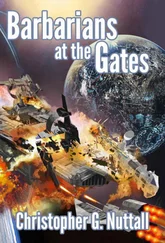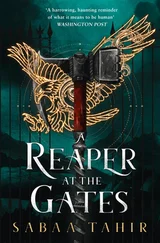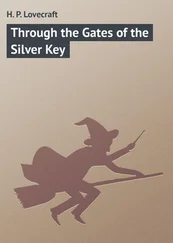By the time the last Fourth Army tank had disappeared to the south, Paulus was commanding a stalled war machine. His supply lines were tangled, his tanks were without fuel, and he watched impotently as Russian rear guards vanished into the eastern haze. Furious at the delay, he began to wonder openly whether the enemy might now have enough time to organize a formidable defense line beyond the horizon.
Only Hitler remained unruffled. He scoffed when Halder showed him an intelligence estimate of more than a million Russian reserves still uncommitted behind the Volga. Jubilant at the easy capture of Rostov, the gateway city to the Caucasus, on July 23, he executed another series of orders which reflected his growing confidence in an early victory. He transferred Field Marshal Erich von Manstein and his five divisions from the Crimea north to Leningrad—at the very time their strength was needed to guarantee success in the oil fields. He also uprooted two elite panzer divisions, the Leibstandarte and Grossdeutschland, from southern Russia and sent them off to France, because he was suddenly fearful of an Allied invasion from across the English Channel.
Again, the bewildered Halder tried to instill a note of caution. At another briefing, he pushed a worn map across the table and drily explained that it showed where the Red Army had defeated Denikin’s White Army in the Russian Civil War of 1920. Halder ran his fingers along the line of the Volga near the old city of Tsaritsyn. The architect of the victory, he added, had been Joseph Stalin and the city was now called Stalingrad.
Temporarily sobered by Halder’s obvious reference to the possibility of history repeating itself, Hitler had promised to keep a close watch on the progress of the Sixth Army and to pay particular attention to its flanks. In the last days of July, he moved swiftly to strengthen Sixth Army’s exposed position on the steppe. Completely reversing himself, he told the Fourth Panzer Army to turn around again and rejoin the drive to the Volga.
Rushing toward the Caucasus, the Fourth Army’s panzers suddenly stopped dead and turned northeast. “So many precious days have been lost,” General Halder fumed in his quarters. But at least he was happy that Paulus now had a friendly army coming up on his right flank. Perhaps, thought Halder, the delay had not given the Russians the grace period they needed.
By the evening of August 5, intelligence pouring into Vinmtsa tended to sustain that hope. Halder briefed Hitler that Sixth Army’s pincers were about to close on two enemy armies. And the Fourth Panzer Army confirmed the capture of Kotelnikovo, a key rail center, just seventy-three miles southwest of Stalingrad. Barring any unforeseen obstacles, Fourth Army anticipated a quick thrust to the Volga.
At dinner that night, Adolf Hitler gloated over the situation. His strategy had been vindicated; he told everyone that the Soviet Union was about to collapse.
While Hitler spoke of triumph, the streets of Moscow were totally dark. But behind drawn curtains in his Kremlin office, the premier of all the Russias, Joseph Stalin, was following his normal work schedule, which began in late afternoon and ended near dawn. The lynx-eyed Stalin had pursued this timetable for years. And from these sessions had come orders that brought terror to his people and subversion to nations around the world.
He was a tyrant who once had studied for the priesthood, a revolutionaty who robbed banks to support the Bolshevist cause, a glutton, and a near drunkard. Upon the death of Lenin, he assumed total control of the Soviet Union. Those who served him endured his rages in silence; those who crossed him died violently.
Stalin never forgot or forgave. He once told a Russian writer that Ivan the Terrible had not been ruthless enough because he left too many enemies alive. Stalin did not make the same error. Nearly twenty years after he broke with Leon Trotsky, one of his agents penetrated the exiled dissenter’s security screen in Mexico and drove an alpenstock through his skull. From Stalin’s office, emissaries emerged to slay thousands of Red Army officers in the 1937- 1938 purges. It was on his orders that more than ten million kulaks, farmers and landowners who balked at turning over their properties to the new Communist state, were killed. And it was from this apartment that the directive went out to sign the Nazi- Soviet nonaggression pact in August 1939, which Stalin believed gave him time to prepare for the inevitable war with Germany.
In this decision, Stalin had trusted an equally cynical dictator, even when spies like Richard Sorge and a man called Lucy told him the exact date Germany proposed to attack the Soviet Union. Branding the information provided by these agents as part of a British plot to draw Russia into war, Stalin put his faith in Hitler’s word.
It had been a colossal blunder. The Nazi invasion brought the Soviet Union to the brink of disaster and Stalin went into shock. Ten days passed before he rallied enough to resume command of his shattered armies and it was none too soon. By October 1941, Hitler had swallowed most of European Russia. In December, now only seven miles from Moscow, German scouts trained their binoculars on the turrets of the Kremlin. But the Russians held and the crisis eased.
Stalin regained his equilibrium and learned from past mistakes. When the spies who had warned him about Hitler’s plans for invasion continued to send a torrent of vital information to Moscow, he paid closer attention. Operating out of Paris was Leonard Trepper, called the “Big Chief,” who ran a spy network known to German secret police as the “Red Orchestra,” because of its nightly radio chorus across Europe. Trepper, a Polish Jew, had been planted in France before the war. There he cultivated an influential circle of German businessmen and military leaders from whom he extracted masses of information. Hounded by German radio sleuths, who tracked his transmitters with special directional equipment, Trepper still survived. But his time was growing short.
Other spies were relatively invulnerable. In Switzerland, a Hungarian Communist named Alexander Rado ran both a publishing business and a spy ring. One of his agents, Rudolf Rossler, was probably the most valuable weapon the Soviet Union possessed. The shy, bespectacled Rossler, code-named “Lucy,” had contacts inside the High Command of the German Army. His sources, never identified to this day, provided him with almost every decision made by the FUhrer. Rossler had passed both strategic and tactical battle plans on to Moscow, usually within twentyfour hours of their having been approved. His communiqués were worth many divisions to Stalin.
Thus, Moscow knew explicit details about Operation Blue: the names of the divisions involved in the attack, the number of tanks to be committed to battle, plus the operation’s ultimate goal of severing the Volga River lifeline and capturing the oil fields of the Caucasus. As the offensive progressed, Lucy also had forwarded each major shift in tactics, from Hitler’s indecision about taking Voronezh to his startling insistence on splitting his armies on the steppe.
Yet Stalin was hesitant when Lucy told of Hitler’s confusion at Voronezh. The premier had always believed that the Germans intended to take Moscow from the south, and therefore might be using the drive toward the Caucasus as a feint to draw Russian reserves from the capital. But when Lucy’s torrent of “inner strategy” continued to accurately forecast the German Army’s course across southern Russia, Stalin began to base Russian defense plans on Lucy’s confidences.
While Hitler chased two hares at the same time, Stalin, on July 13, had agreed to a plan set forth by his general staff (STAVKA) to withdraw Soviet units as far as the Volga, thereby forcing the Germans to spend the coming winter in open country. Almost a week later, when STAVKA received the astonishing news that the German Army groups had begun to split their forces on the steppe, Russian strategy changed again. Until this time, little consideration had been given to making a determined stand on the west bank of the Volga. Now Stalin made a decision of momentous significance. He sent an order to members of the City Soviet (city council) in Stalingrad to prepare for a seige. As of July 21 they were to organize the entire population in a frantic effort to build a fortified ring around the outskirts of the city while STAVKA tried to beef-up the small military garrison.
Читать дальше












